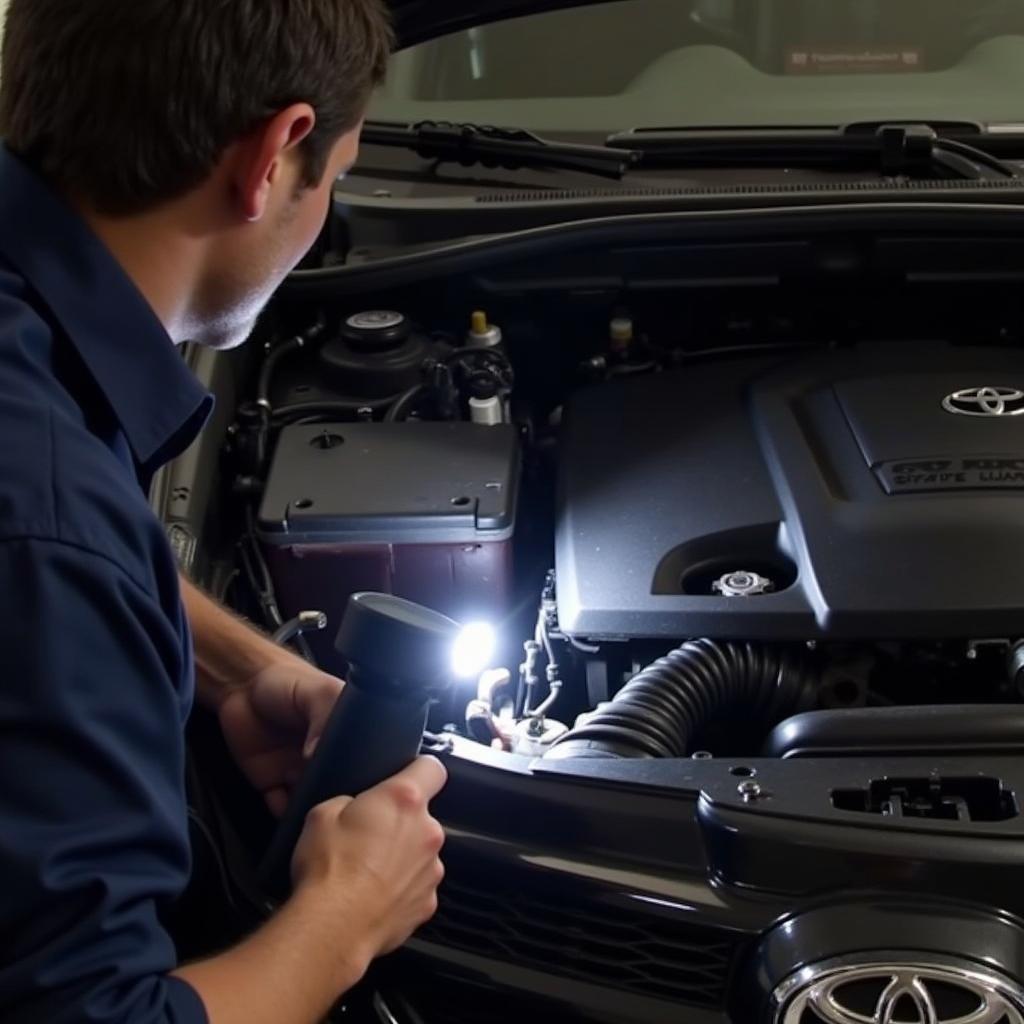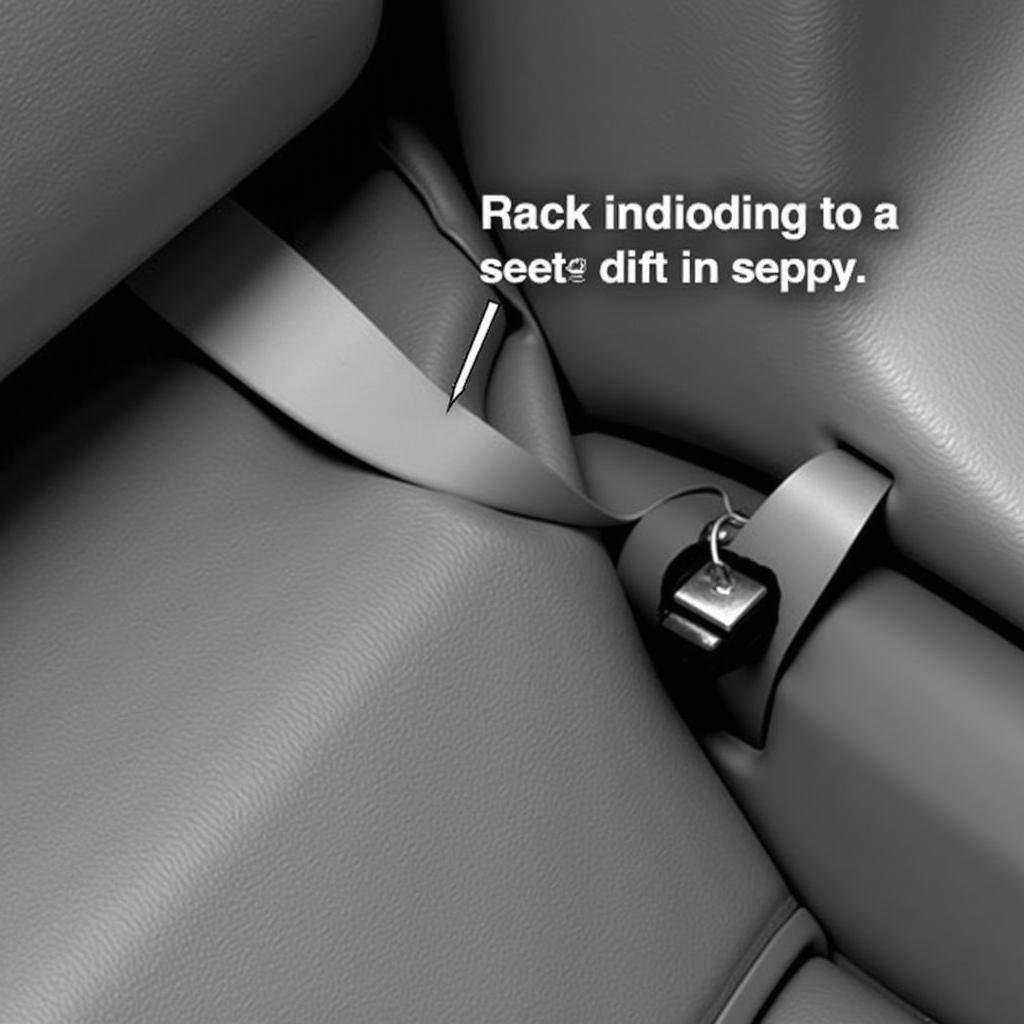The “brake low warning” on your 2014 Harley Tri Glide is a safety feature designed to alert you of a potential issue with your braking system. While it can be alarming to see this warning pop up on your dashboard, understanding its causes and knowing how to troubleshoot them can empower you to address the situation effectively. This comprehensive guide delves into the common reasons behind the “brake low warning” on a 2014 Harley Tri Glide and provides practical steps for diagnosis and resolution.
Decoding the “Brake Low Warning”
The “brake low warning” typically illuminates as a red warning light on your Tri Glide’s instrument panel, often accompanied by an audible chime. This warning signals a problem within the linked brake system, which is responsible for distributing braking force between the front and rear brakes for optimal stopping power. It’s crucial to remember that this warning doesn’t necessarily indicate complete brake failure. However, it does signify a potential decrease in braking efficiency, demanding immediate attention to ensure your safety and that of others on the road.
Common Culprits Behind the Warning
Several factors can trigger the “brake low warning” on your 2014 Tri Glide. Let’s explore the most common ones:
-
Low Brake Fluid Level: The most frequent cause is insufficient brake fluid in the master cylinder reservoir. Brake fluid is the lifeblood of your braking system, transmitting force from the brake lever to the calipers that squeeze the brake pads. Over time, brake pads wear down, requiring more fluid to fill the calipers. If the fluid level drops too low, the system’s pressure can be compromised, triggering the warning.
-
Worn Brake Pads: As your Tri Glide’s brake pads wear down with use, the brake calipers need to extend further to engage the rotors. This extension requires more brake fluid, potentially leading to a drop in the reservoir level and activating the warning light.
-
Brake Fluid Leak: A leak anywhere in the brake system, from the master cylinder to the calipers and connecting lines, can cause a drop in fluid level and trigger the warning.
-
Faulty Brake Light Switch: While less common, a malfunctioning brake light switch can also cause the “brake low warning.” The switch activates the brake lights when you apply the brakes and is also linked to the brake pressure monitoring system. If the switch fails, it can disrupt this system and activate the warning.
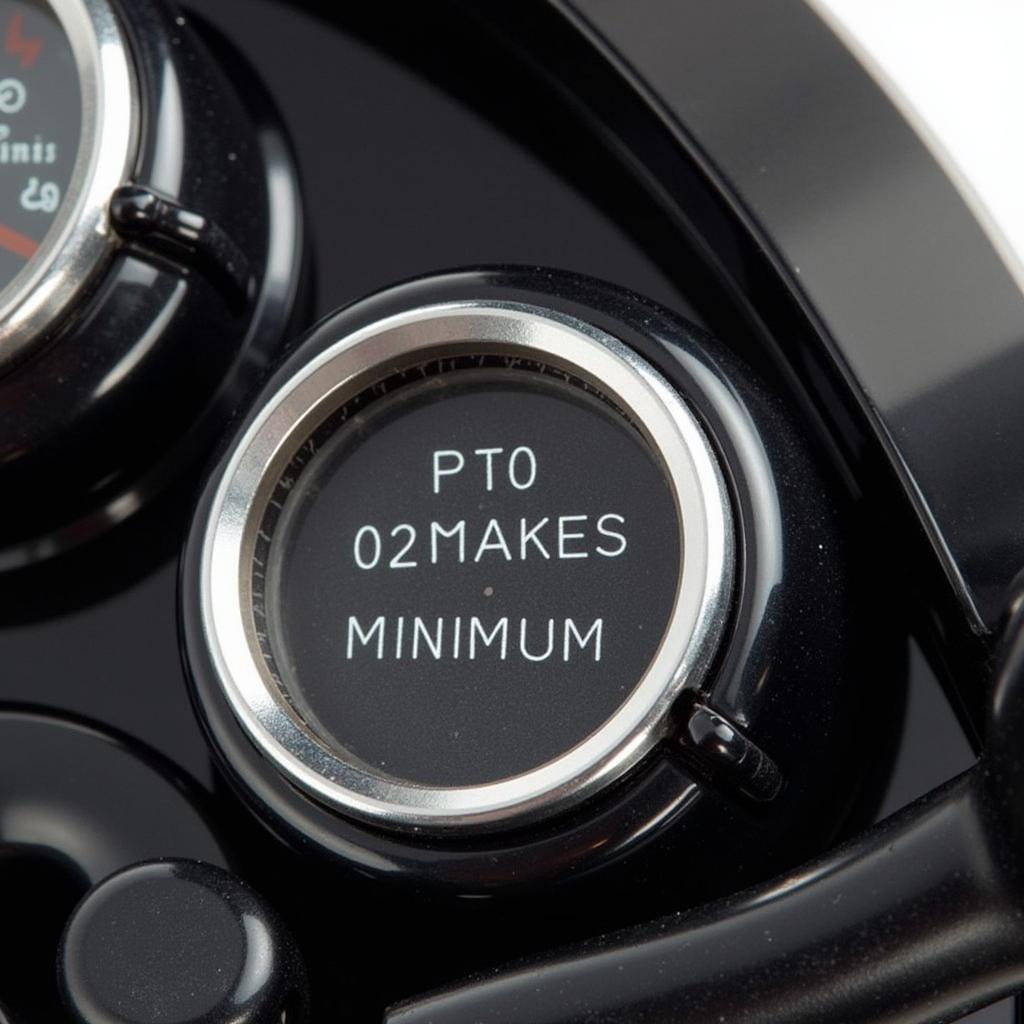 2014 Harley Tri Glide Brake Fluid Reservoir
2014 Harley Tri Glide Brake Fluid Reservoir
Diagnosing the Problem: A Step-by-Step Approach
Before jumping to conclusions, it’s essential to diagnose the root cause of the “brake low warning” systematically. Here’s a step-by-step guide:
-
Check the Brake Fluid Level: Begin by inspecting the brake fluid level in the master cylinder reservoir, located on the right handlebar of your Tri Glide. Ensure the motorcycle is on level ground. If the fluid level is below the “MIN” or “LOW” mark, it needs to be topped up.
-
Inspect for Leaks: If the fluid level is low, carefully examine the master cylinder, brake lines, and calipers for any signs of leaks. Look for wet spots, drips, or fluid residue. If you detect a leak, it’s crucial to address it immediately, as even a minor leak can significantly compromise braking performance.
-
Assess Brake Pad Wear: Check the thickness of your brake pads. If they appear excessively thin or worn down to the metal backing plates, they require replacement.
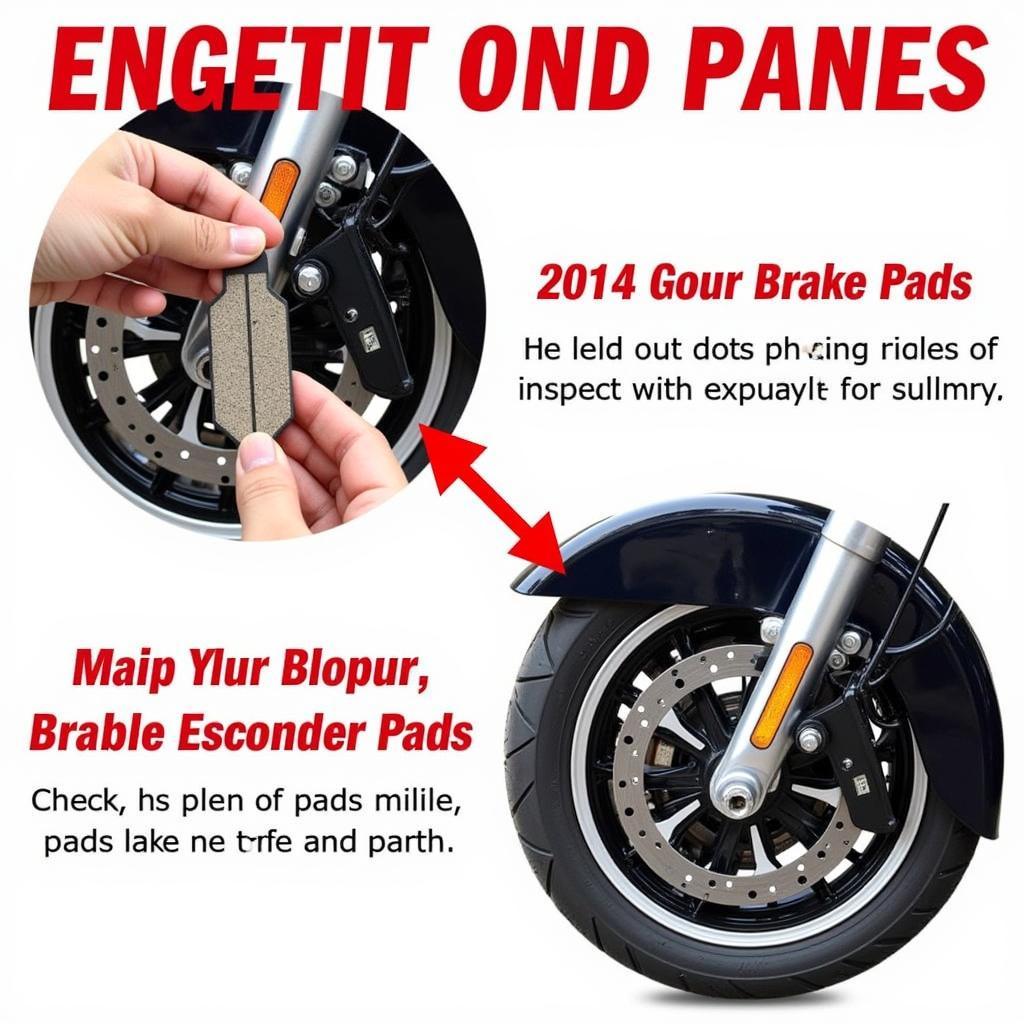 Inspecting Brake Pads on a 2014 Harley Tri Glide
Inspecting Brake Pads on a 2014 Harley Tri Glide
- Test the Brake Light Switch: With the ignition on, check if your brake lights illuminate when you apply both the front and rear brakes. If the lights don’t come on or function intermittently, the brake light switch might be faulty and need replacement.
Seeking Professional Assistance
If you’re unsure about any aspect of the diagnosis or lack the experience to address the issue yourself, it’s best to consult a qualified Harley-Davidson technician. They have the expertise and specialized tools to diagnose and repair your Tri Glide’s braking system accurately and safely.
“Remember, your motorcycle’s brakes are critical safety components. Never compromise on their functionality.” – John Riley, Senior Harley-Davidson Technician
Addressing the “Brake Low Warning”: Solutions and Precautions
Once you’ve identified the cause of the warning, you can proceed with the appropriate solution:
-
Low Brake Fluid: Top up the brake fluid reservoir using the recommended DOT 4 brake fluid specified in your owner’s manual. After topping up, pump the brakes several times to restore pressure and recheck the fluid level.
-
Worn Brake Pads: Replace worn-out brake pads with new ones. Ensure you use high-quality pads designed for your Tri Glide’s model year.
-
Brake Fluid Leaks: Repairing brake fluid leaks requires specialized knowledge and tools. It’s highly recommended to have this task performed by a qualified Harley-Davidson technician to ensure a safe and effective repair.
-
Faulty Brake Light Switch: Replacing the brake light switch typically involves removing the affected brake lever or pedal assembly and installing a new switch. If you’re comfortable with basic mechanical tasks, you can refer to your owner’s manual or online resources for guidance. However, if you’re uncertain, seeking professional help is always advisable.
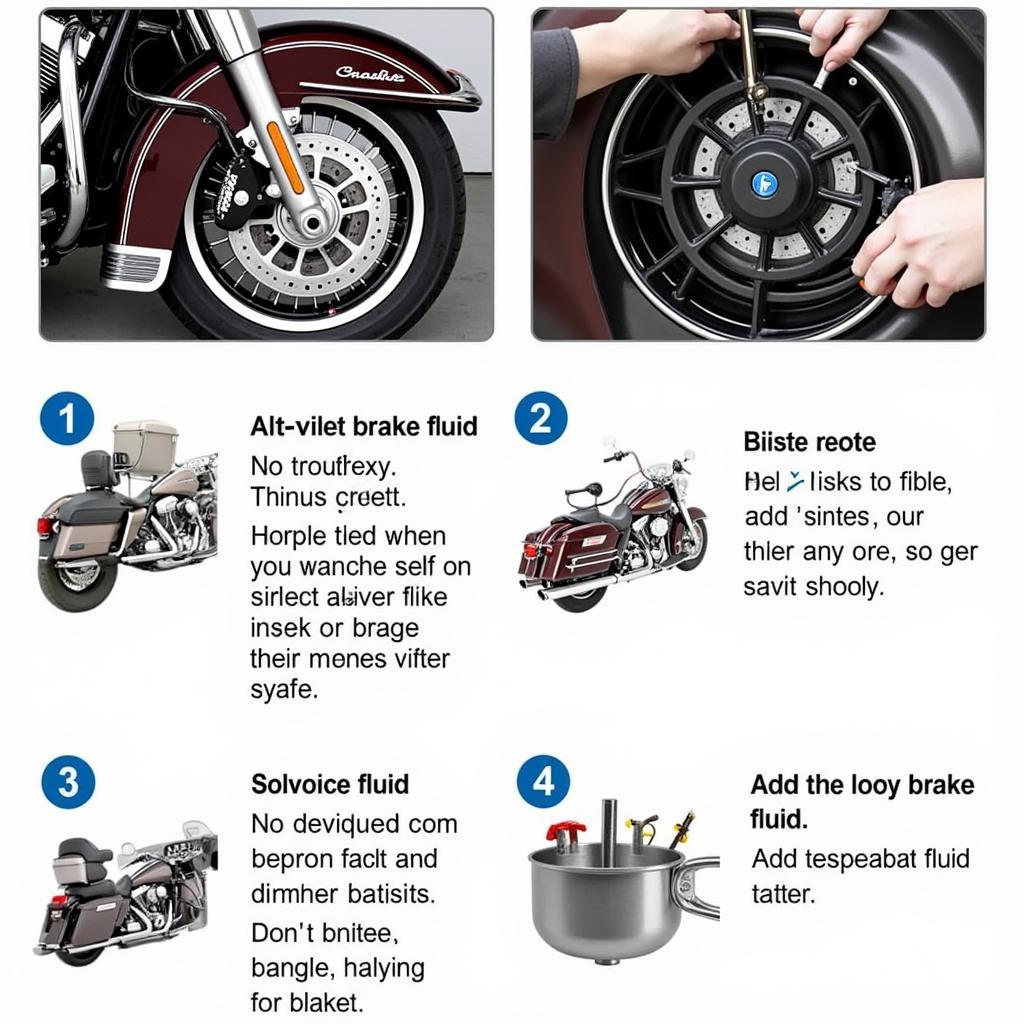 Adding Brake Fluid to a 2014 Harley Tri Glide
Adding Brake Fluid to a 2014 Harley Tri Glide
Conclusion: Prioritizing Safety and Preventive Maintenance
Addressing the “brake low warning” on your 2014 Harley Tri Glide promptly is crucial for a safe and enjoyable riding experience. Regularly inspecting your brake fluid level, checking for leaks, and monitoring brake pad wear can help prevent unexpected issues and ensure your motorcycle’s braking system operates at its best. Remember, safety should always be your top priority when riding your Tri Glide.

